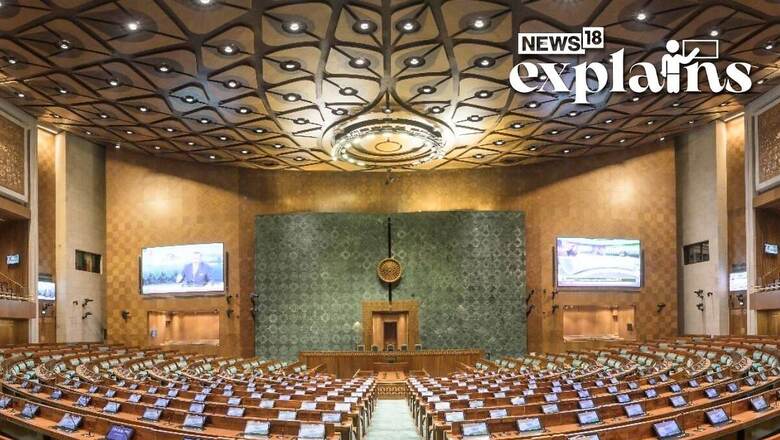
views
With the special session of the Parliament beginning from Monday, the government announced that House proceedings will move to the new Parliament building. Prime Minister Narendra Modi inaugurated the new complex on May 28 and expressed hope that it would become a cradle of empowerment, igniting dreams and nurturing them into reality.
The old Parliament building has stood for over 96 years as a sentinel of time and a repository of India’s democratic journey. However, having relied on the building dating back almost a century and a reminder of the colonial era, India now proudly introduces a fresh architectural masterpiece that truly represents the essence of an independent nation.
A day before the session, Vice President and Rajya Sabha Chairman Jagdeep Dhankhar hoisted the national flag at the new Parliament building on Sunday.
With a price tag of Rs 971 crore, the new complex serves as a testament to India’s advancement and aims to embody the aspirations of its 1.35 billion citizens, as stated on the Central Vista Redevelopment Project’s website. The design of the building, which takes on a triangular shape, is intended to maximize space utilization, as mentioned on the project’s website.
What’s Special About the New Parliament Building
- The new Parliament complex boasts larger legislative chambers, each with its own unique theme. The Lok Sabha, inspired by India’s national bird, the peacock, will have three times the current seating capacity, accommodating 888 seats.
- On the other hand, the Rajya Sabha, based on the national flower, the Lotus, will have 348 seats. In joint sessions, the Lok Sabha hall will be able to accommodate 1,272 seats, according to the new floor plan.
- A significant addition to the complex is the ‘Constitutional Hall,’ located in the center. This new feature symbolically and physically places the citizens “at the heart of democracy,” as mentioned on the Central Vista project website. The exterior of the complex will house offices similar to the previous building, and the central joint session from the old complex will now be incorporated into the Lok Sabha hall.
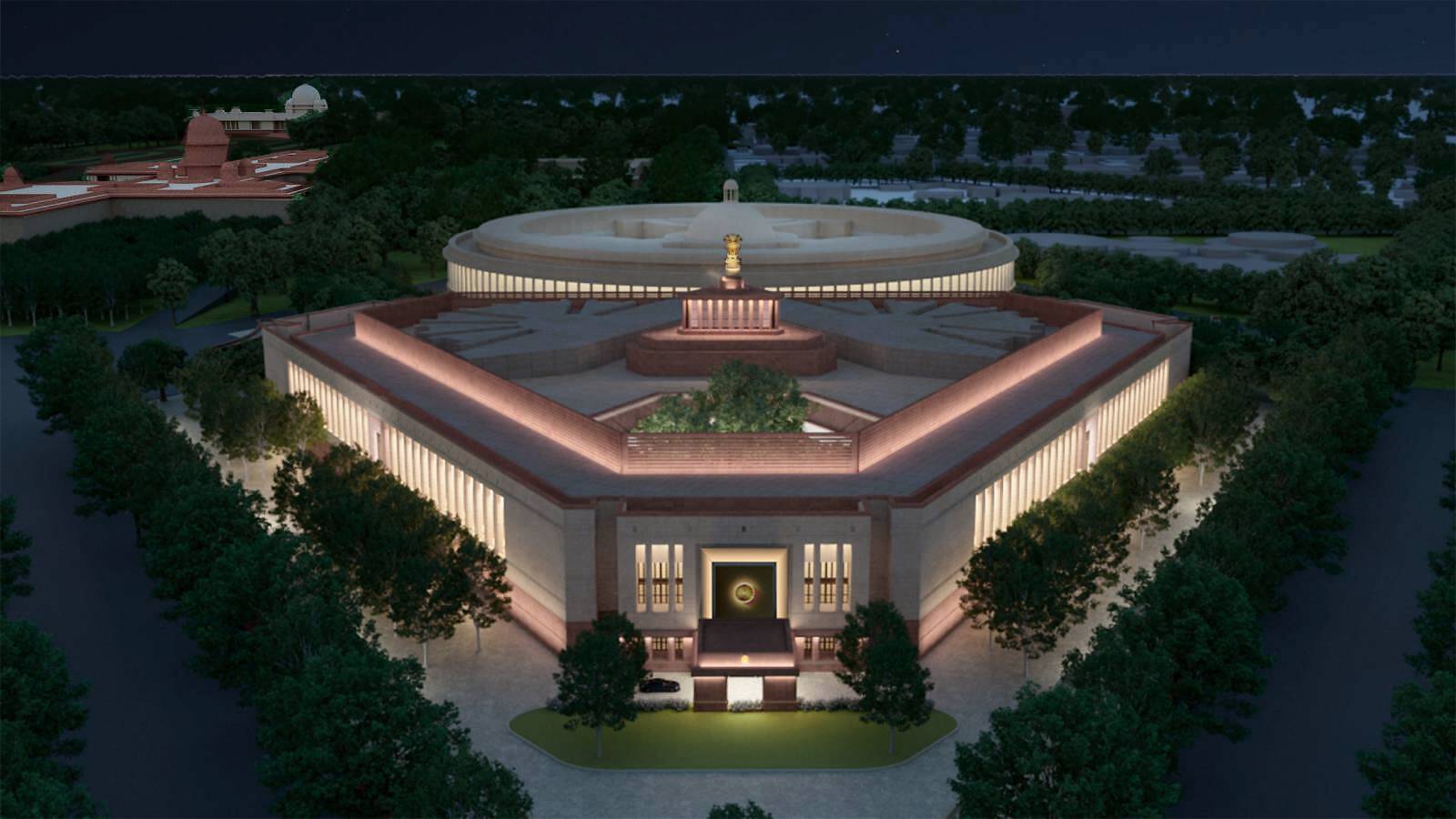
Old Vs New Parliament
Here are some graphics to help you understand the changes coming about:
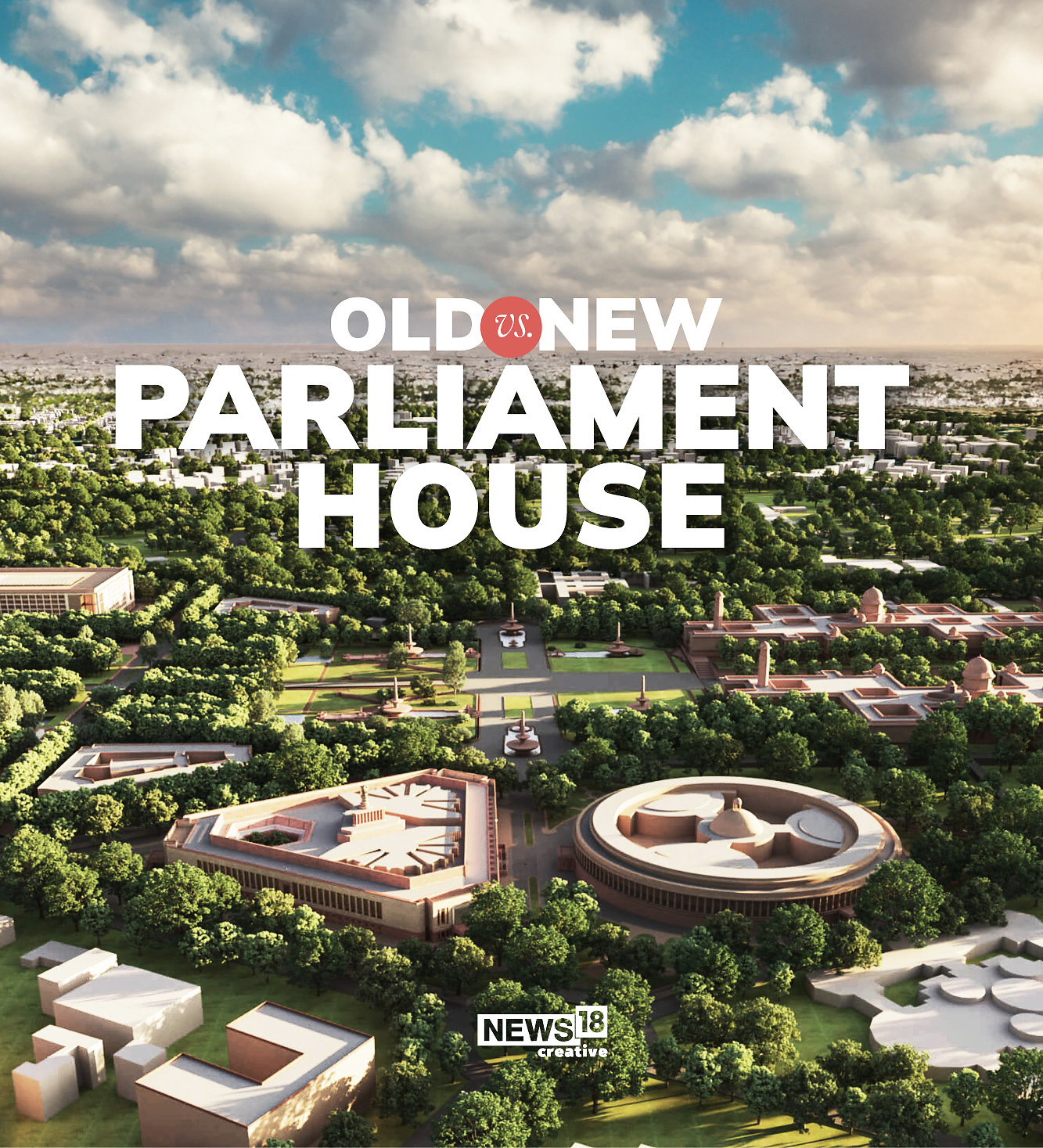
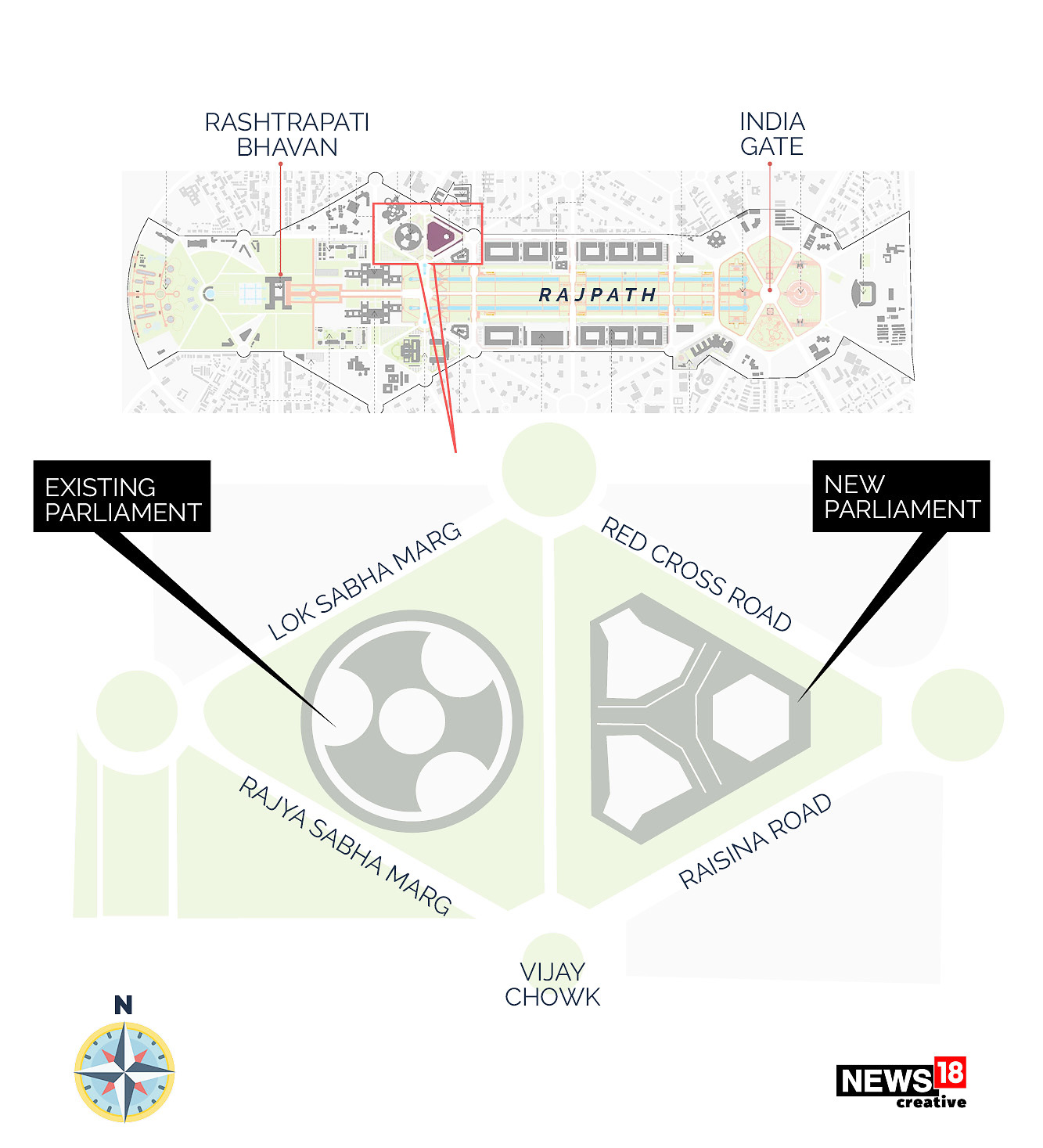
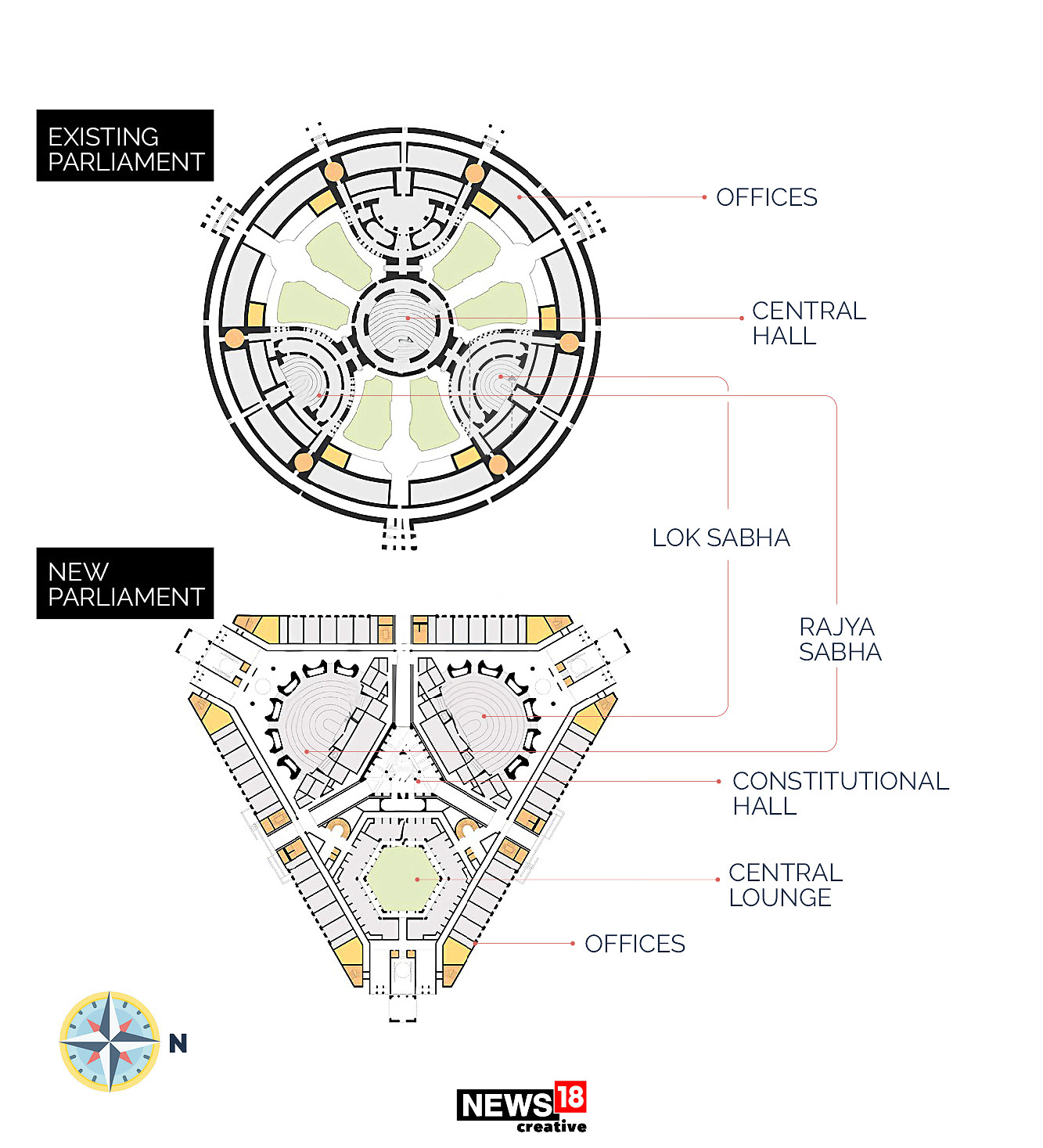
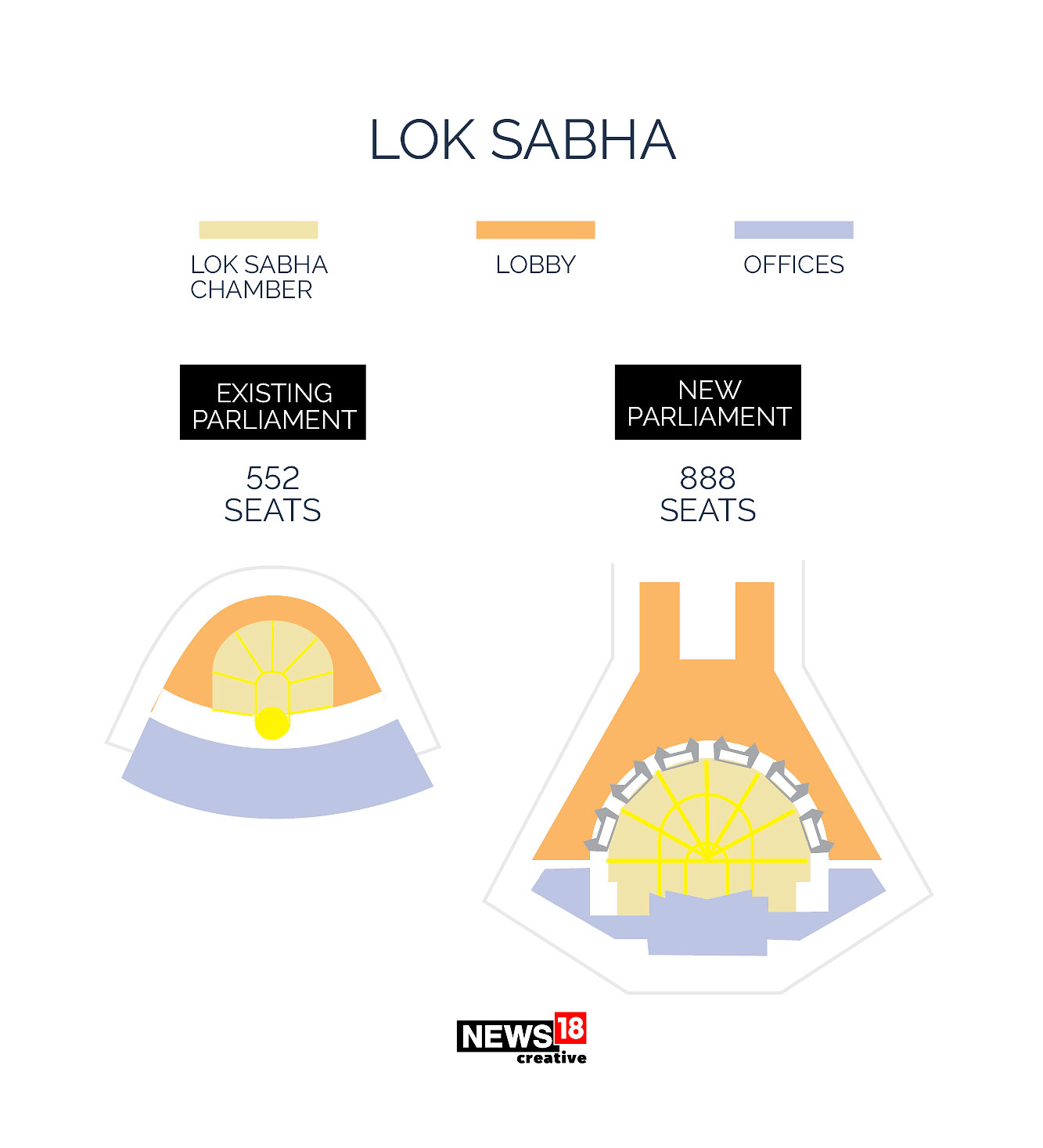

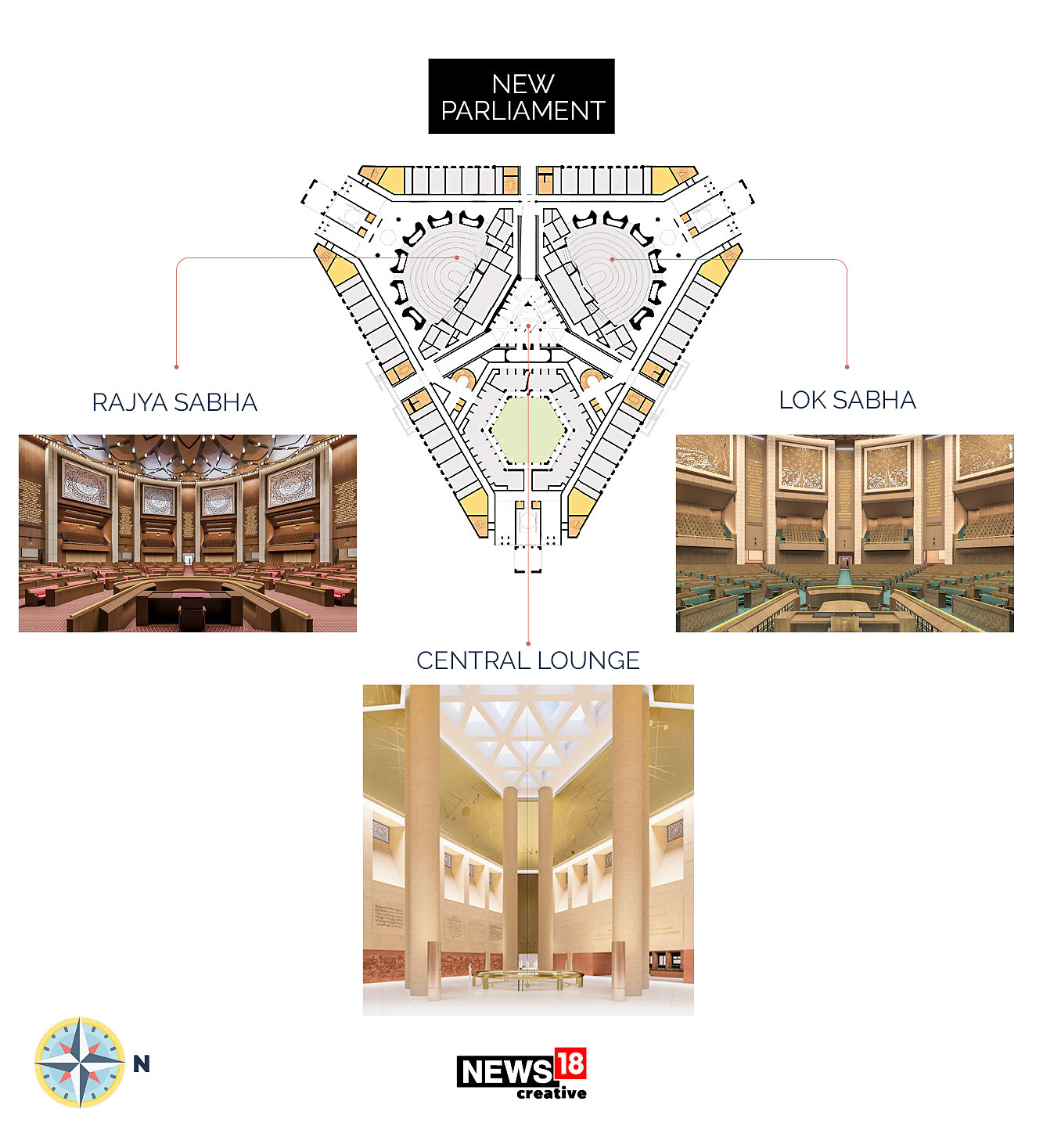
What Was the Need for a New Parliament Building?
Importance of Old Parliament
As per the Central Vista website, the earlier Parliament building holds immense significance as the embodiment of the country’s democratic system, having withstood the challenges of the freedom struggle against colonial rule and serving as the witness to numerous historical milestones. The existing Parliament building holds the distinction of being the first Parliament of independent India, where the Constitution of India was adopted. Therefore, the preservation and revitalization of this architectural treasure hold great national importance.
As an iconic symbol of India’s democratic spirit, the Parliament building stands prominently at the heart of the Central Vista. Originally designed by British architects Sir Edwin Lutyens and Herbert Baker, the colonial-era structure took six years to construct, from 1921 to 1927. Initially known as the Council House, it housed the Imperial Legislative Council during that period. To accommodate the growing need for space, two additional floors were added to the building in 1956.
In 2006, recognizing the significance of India’s rich democratic heritage spanning 2,500 years, the Parliament Museum was established within the building. Over time, substantial modifications were made to transform the structure into a modern Parliament, adapting it to meet the evolving needs of a contemporary legislative body.

Following thorough discussions regarding the architectural design of the Council House, both Herbert Baker and Sir Edwin Lutyens agreed upon a circular shape, which would evoke the essence of a colosseum-like structure. It is widely believed that the Chausath Yogini temple in Morena, Madhya Pradesh, with its distinct circular shape, served as an inspiration for the design of the Council House. However, it is important to note that there is no historical evidence to substantiate this claim, the website says.
Need for a New Building
The construction of the Parliament House building commenced in 1921 and was completed in 1927, making it nearly a century old. It holds the prestigious Heritage Grade-I designation. Over the years, the activities within the Parliament and the number of individuals working there, including visitors, have significantly increased. Unfortunately, there are no existing records or documents detailing the original design of the building. Consequently, subsequent constructions and modifications have been carried out in an ad-hoc manner, the website explains.
For instance, in 1956, two additional storeys were added to the outer circular section of the building, obscuring the dome of the Central Hall and altering the facade of the original structure. Moreover, the coverings on the Jaali windows have diminished the natural light in the halls of the two parliamentary houses. As a result, the building is showing signs of distress and overuse, and it is unable to meet the current requirements in terms of space, amenities, and technology.
The present building was not initially designed to accommodate a bicameral legislature for a full-fledged democracy. The number of seats in the Lok Sabha, which was based on the 1971 Census, has remained unchanged at 545. However, it is expected to increase substantially after 2026 when the freeze on the total number of seats expires. The current seating arrangements are cramped and unwieldy, with no desks beyond the second row. Furthermore, the Central Hall can only accommodate 440 individuals, posing a significant challenge during Joint Sessions. The limited space for movement within the building also presents a significant security risk.




















Comments
0 comment